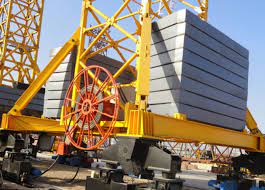
TRANSPORTER
A Transporter is a broad term that encompasses various types of vehicles, equipment, or systems used for the transportation of goods, materials, or people from one location to another. Transporters can include trucks, buses, trains, automated guided vehicles (AGVs), and more, depending on their specific application and industry.
Product Feature
1. Mode of Transportation: Transporters come in different forms, such as road vehicles (trucks, buses, cars), railway vehicles (trains, trams), waterborne vessels (ships, boats), and airborne vehicles (airplanes, helicopters).
2. Payload Capacity: The payload capacity varies widely depending on the type of transporter, from carrying passengers in buses to shipping containers in cargo trucks or ships.
3. Propulsion: Transporters can be powered by various means, including internal combustion engines, electric motors, steam engines, or even human power (bicycles, rickshaws).
4. Control Systems: Many modern transporters feature advanced control systems, such as GPS navigation, autonomous driving technology, and communication systems for monitoring and management.
5. Passenger Comfort: Transporters designed for passenger transport often include features for comfort and safety, such as air conditioning, seating arrangements, and entertainment systems.
6. Cargo Handling: Transporters for freight often have mechanisms for loading, unloading, and securing cargo, such as cranes, forklifts, or loading docks.
7. Safety Systems: Safety features, such as seat belts, airbags, antilock braking systems (ABS), and collision avoidance systems, contribute to the safety of passengers and cargo.
Product Application
1. Efficient Mobility: Transporters provide efficient means of moving people and goods over long distances, contributing to economic growth and global connectivity.
2. Accessibility: They enhance accessibility, enabling people to reach various destinations and access goods and services.
3. Reduction in Travel Time: Modern transporters allow for faster travel and delivery times, saving time for individuals and businesses.
4. Environmental Impact: Some transporters are designed to be environmentally friendly, with reduced emissions and improved fuel efficiency, contributing to sustainability goals.
5. Economic Growth: Transporters are essential for trade and commerce, fostering economic growth by facilitating the movement of goods and services.
6. Safety: Safety features in passenger transporters reduce the risk of accidents and injuries, while cargo transporters ensure the safe delivery of goods.
7. Convenience: Public transporters like buses and trains offer convenient and cost-effective commuting options for daily travelers.
8. Logistics Efficiency: Transporters used in logistics and freight transport streamline the supply chain, reducing costs and improving inventory management.
9. Global Connectivity: Transporters that operate internationally connect different regions and enable the exchange of cultures, ideas, and products.




